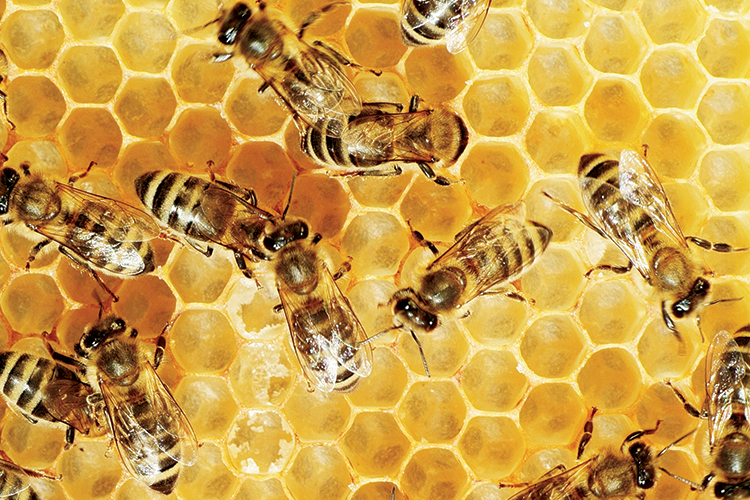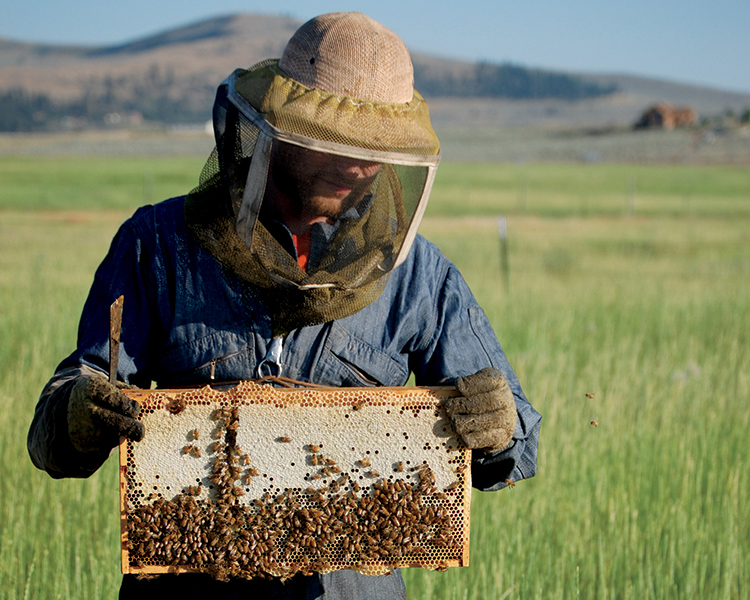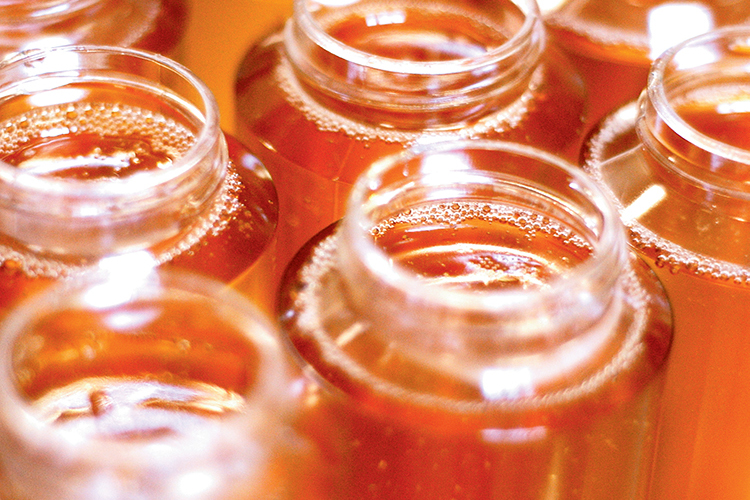Home > Montana > Montana Crops & Livestock > What’s the Buzz in Montana?
What’s the Buzz in Montana?

The secret is out. Montana is sticky sweet – with honey, that is. Thanks to the state’s 193,121 beehives, filled with hardworking honeybees, Montana produces nearly 15 million pounds of honey on average each year, according to 2013 statistics. The $31 million that goes into the state’s economy is pretty sweet, too.
Smoot Honey, located in the north-central town of Power, has been producing the liquid gold since the mid-1960s. A family-owned and -operated company, the commercial beekeeping operation produces close to 650,000 pounds of western white honey – a lighter, table-grade honey – per year.
“Montana is great for beekeeping due to the lack of population density and our climate,” says Vice President Mark Jensen of Smoot Honey, who also co-owns the company. “There’s a lot of wild clover and alfalfa that bees are able to forage on, and the lack of housing developments leaves lots of wild country. We’re able to take advantage of it.”
Smoot sells most of its honey wholesale to other packers who then sell it under their own label, but the company also packs some for various customers. Jensen says businesses like bakeries and breweries buy it in bulk.
Though Smoot mainly focuses on honey production, Jensen says it’s important for consumers to be aware how vital honeybees are for the world’s food supply.
“It’s much more far reaching than a lot of consumers realize,” he says. “You can see apples and oranges, and they’re there because a bee helped make a seed or pollinate a flower, but it’s also the products that have those raw ingredients in them like bread or ice cream. Ingredients are able to be in certain foods because a honeybee pollinated a plant somewhere.”

Keeping the Buzz Alive
Montana ranks second in the nation for honey production, right behind North Dakota, and part of maintaining the industry is keeping bees healthy. Currently, there are 191 beekeepers in the Big Sky State, including both registered commercial beekeepers and hobbyists.
State Entomologist Cam Lay explains that as an effort to keep honeybees healthy for commercial beekeepers, Montana has a law that requires a 3-mile buffer zone between commercial apiaries.
“That’s part of the reason people come to Montana,” he says. “We’re not crowded. It’s easy to find large farms and a place to put your bees.”
The buffer zone gives exclusive territory that allows the bees to thrive without being crowded. It helps minimize the spread of disease and parasites, in turn keeping bees healthy.
Going Mobile
While Montana relies on bees for sweet honey and pollination, other states do too – specifically, California.
“California almond orchards are the main market for Montana bees,” Lay says. “Beekeepers ship truckloads of hives to California in the winter, and they come back here to recover in the summertime.”
The bees pollinate California’s almond orchards, and without them, the crop would not flourish.
Team Effort
Jensen says that Montana’s agriculture culture helps keep the multifaceted honeybee industry strong.
“With the history of agriculture in our state, farmers, ranchers and citizens understand that we’re trying to make a living by providing a product everyone likes,” he says.
And both Jensen and Lay agree that to keep Montana’s industry thriving, consumers can do their part.
“Consumers can plant patches of wildflowers and use insecticides judiciously,” Lay says. “One man’s weeds are another man’s bee pasture.”




